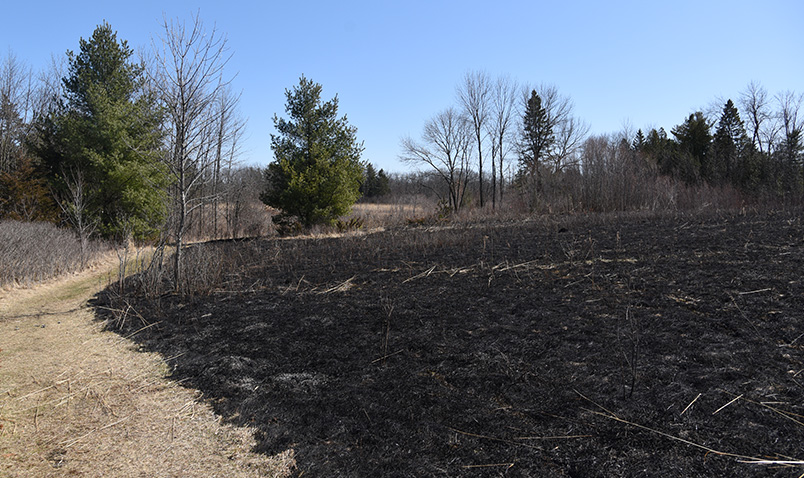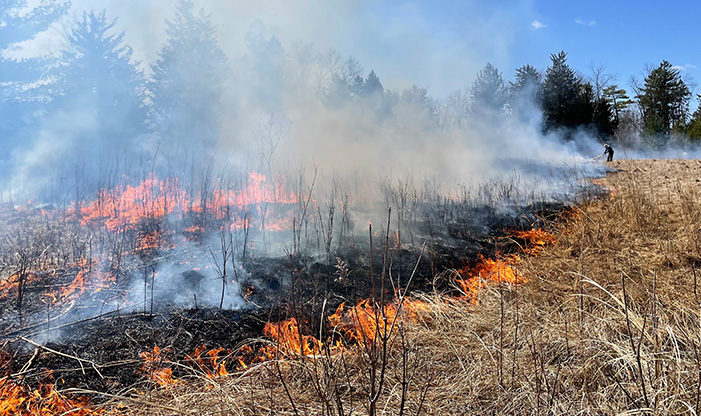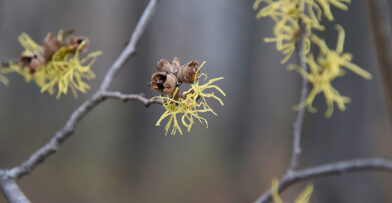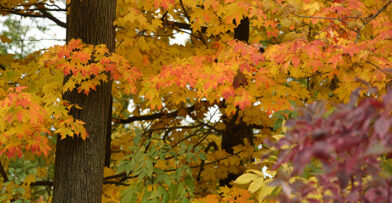If you visit the Center this spring, you may notice areas of our land that look like they’ve been burned. That’s because it is the season for prescribed burns, which are a powerful land management tool. It is helpful to understand the benefits by learning about the history of controlled burning, the reasons prescribed burns take place at the Center, and the outcomes for wildlife.
History of Prescribed Burns
Wildfires, both natural and prescribed, have a long and varied history in America. The practice of intentionally setting wildfires was used by Native Americans, and wildfires were a natural occurrence. Later, in the early 20th century, the strategy of managing land switched to fire suppression. This was in part to try and control forest fires. Many later realized this had an adverse effect, allowing the buildup of fuel on the ground and making uncontrolled fires more prevalent. It also starved the forests and prairies of a natural phenomenon, fire, that helped maintain their overall health.
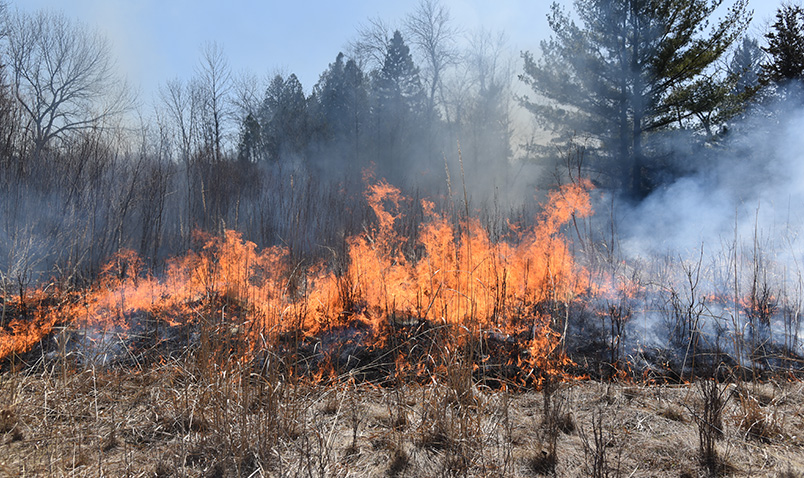
Prescribed burns began making a comeback in the 1970s when the National Park Service authorized and administered controlled burns. The US Forest Service has made the practice of prescribed burns a part of their forest management strategy since 1995.
Why the Center Performs Prescribed Burns
Schlitz Audubon uses prescribed burns to promote a healthy landscape for plants and animals, as fire is a potent stimulator to plant growth. Fire can help prairie plants release their seeds and grow. It also prepares the ground for future growth. Controlled burns also help remove woody encroachment by trees such as ash, popular, and willow into the prairie. In addition, controlled burning dispels the fuel that accumulates on the ground, helping to prevent wildfires.
Prescribed burning is done when it is safest for animals – when herptiles such as frogs and turtles are dormant and rodents are busy underground. Prescribed burns are beneficial for many grassland birds. After a burn, young woody plants become less dominant and habitat for these birds improves.
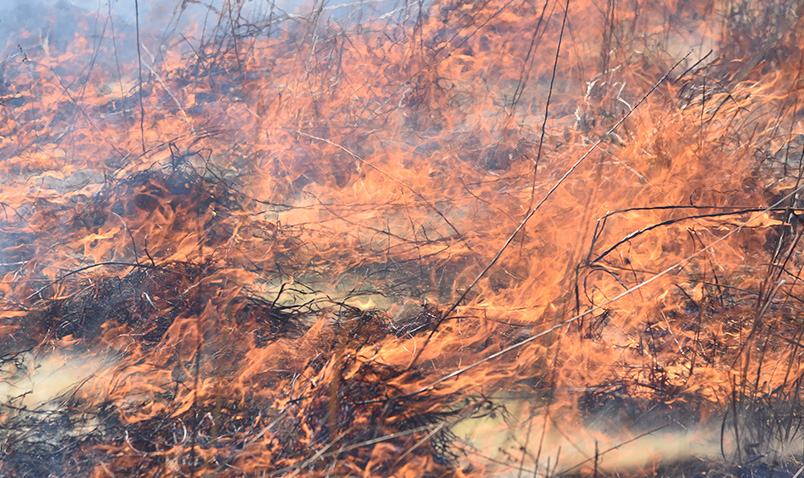
Another effect of a prescribed burn in spring is the control of invasive species, such as reed canary grass. This cool-season species begins growing earlier in the season than native species. Well-timed burns prevent reed canary grass from spreading. Native plants are not only spared, but also given an advantage, as they will grow better after a burn.
When Prescribed Burns are Done
Burns are conducted between the growing seasons. When a burn is done in the spring, it helps dormant seeds to germinate, and helps plants grow by activating the roots. It also controls cool season grasses. In fall, burning prepares land and soil for renewed growth the following spring. It burns off the duff layer, which sits above the soil and contains accumulated plant material from the ground layer plants and trees. This clears the way for new growth and creates fertilizer from the decayed plants. The Center doesn’t perform prescribed burns in our woodlands, however, because it is desirable for a duff layer to be present in our forests.
Our conservation team conducts prescribed burns, only when the conditions are right to achieve the goals they have for a particular area of the property. Volunteer Land Stewards take part in almost every step, from pre-burn to post-burn activities. The team actively burns a total of about 45 acres of our land, including the prairies and near the building.
How We Conduct Controlled Burns at Schlitz Audubon
Kyle Goergen, Resource Ecologist at the Center, said there are certain conditions land managers watch for when planning a prescribed burn. The best time is when the weather is cool, the wind speed is slow (5-15 mph), the surrounding environment isn’t too dry, and there is sufficient fuel on the ground. These conditions usually occur in the spring, between early March and late April, as well as in fall before it snows.
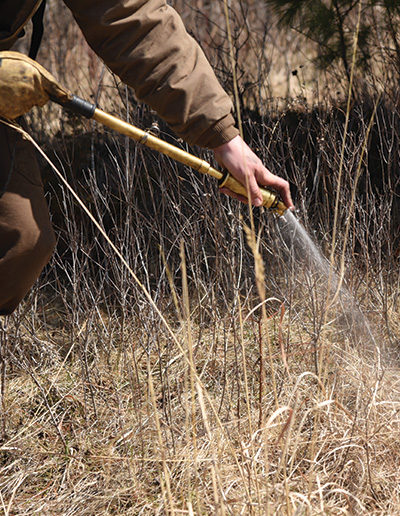
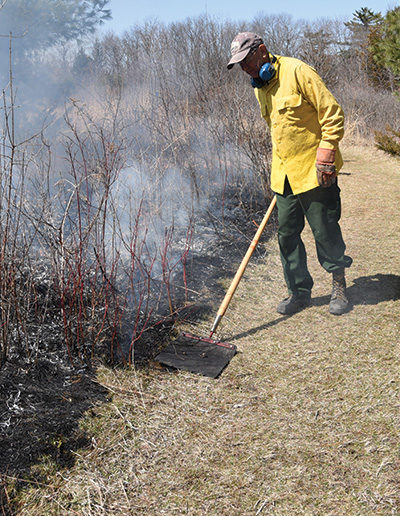
The fire is controlled by using a method called backburning. This means lighting vegetation with a drip torch against the prevailing wind, which causes the fire to burn in a slow and manageable fashion. A number of other tools are used to control the fire: Leaf rakes clear away leaf litter, bladder packs are used to spray water where fire is not intended to reach, and a fire swatter suppresses flames in leaf litter and short grasses. Done properly by trained professionals with experience, they are a safe way to maintain the health of the landscape.
When you go to our Visitor Center later in the summer, check out the abundance of blooms that will appear. Burning provides the conditions for flowering plants to thrive. When you see the evidence of a burn on the Schlitz Audubon property, you can feel good knowing it will benefit our land and wildlife into the future.
